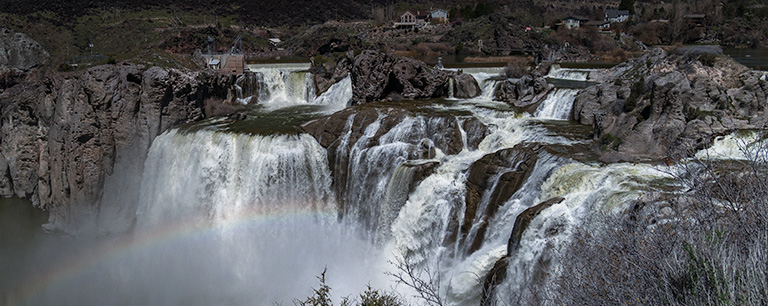This month I had the opportunity to join College of Southern Idaho (CSI) Professor Shawn Willsey and a dozen other geology nerds, on a two-day field trip around some of the significant geological features in the Twin Falls area.
If a field trip with a stuffy geology professor sounds like an odd way to spend a weekend, then you are probably not familiar with Willsey, who has a devoted following on YouTube, or Twin Falls which is ground zero for the Bonneville Flood (Bonneville, as-in the Bonneville Salt Flats in Utah). It is a fascinating story that had a major impact on not just Idaho, but also present-day Washington and Oregon. It is a long way to the ocean from the Great Salt Lake (formerly Lake Bonneville), but when the lake overflowed its banks ~17,400 years ago, there was no stopping it.
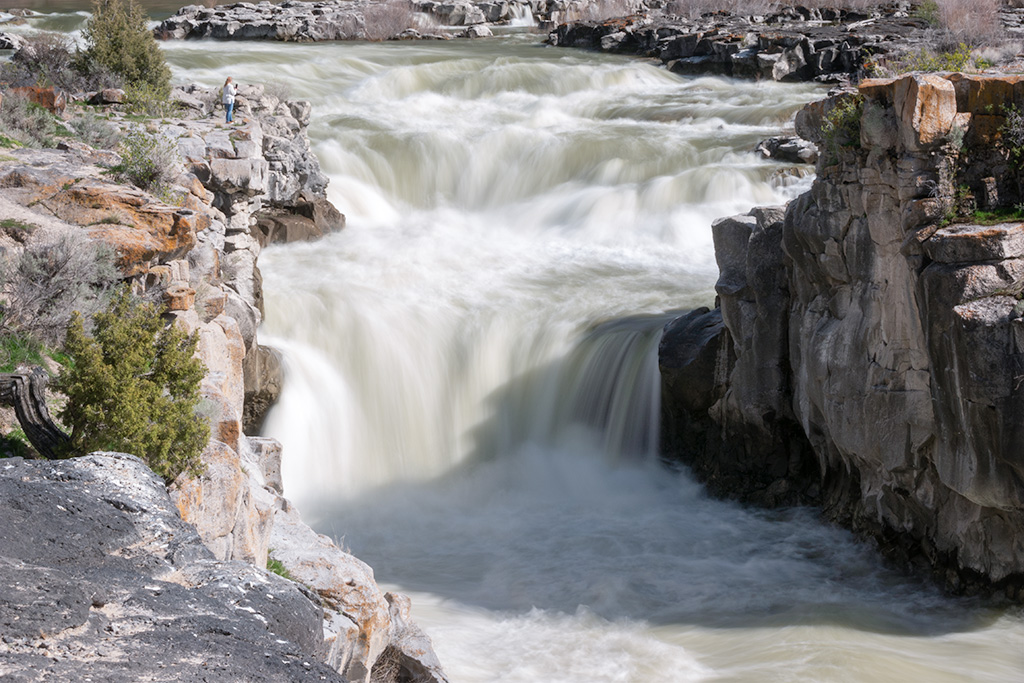
In searching around the Twin Falls area for BLM land to overnight on, I came across Caldron Linn near Murtaugh, about 10 miles east of Twin Falls. Little did I know at the time, Caldron Linn is the last undeveloped major water fall on the Snake River (1). Though also known as Star Falls, the original name of Caldron Linn comes from the 1811 explorers who rightly likened the falls to a boiling caldron. Scottish members of the group appended their word for a waterfall, “linn.” (2)
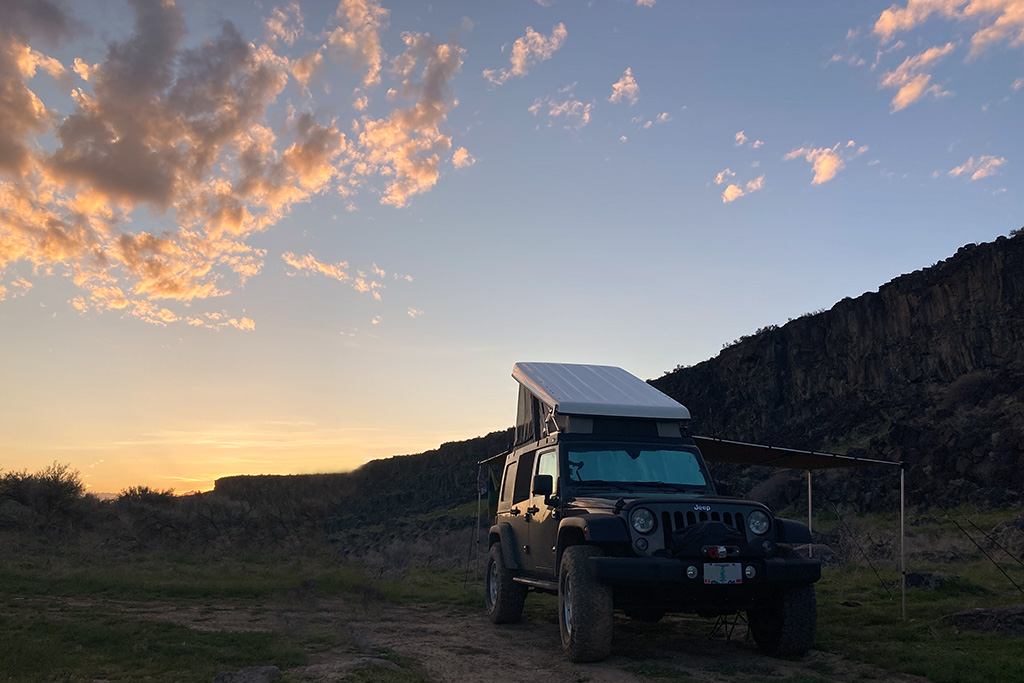
Caldron Linn has several semi-developed campsites along the primary parking area and then several Jeep trails that head downriver, providing more secluded options. Even if not looking for a place to overnight, Caldron Linn is a must-see due to its wild nature. As I would come to find out; in Southern Idaho most water that moves is used to generate electricity, so Caldron Linn was a fantastic view into what things might have looked like in 1811 – at least in early April after a near-record snowpack. I am sure that the water level dwindles as summer sets in.
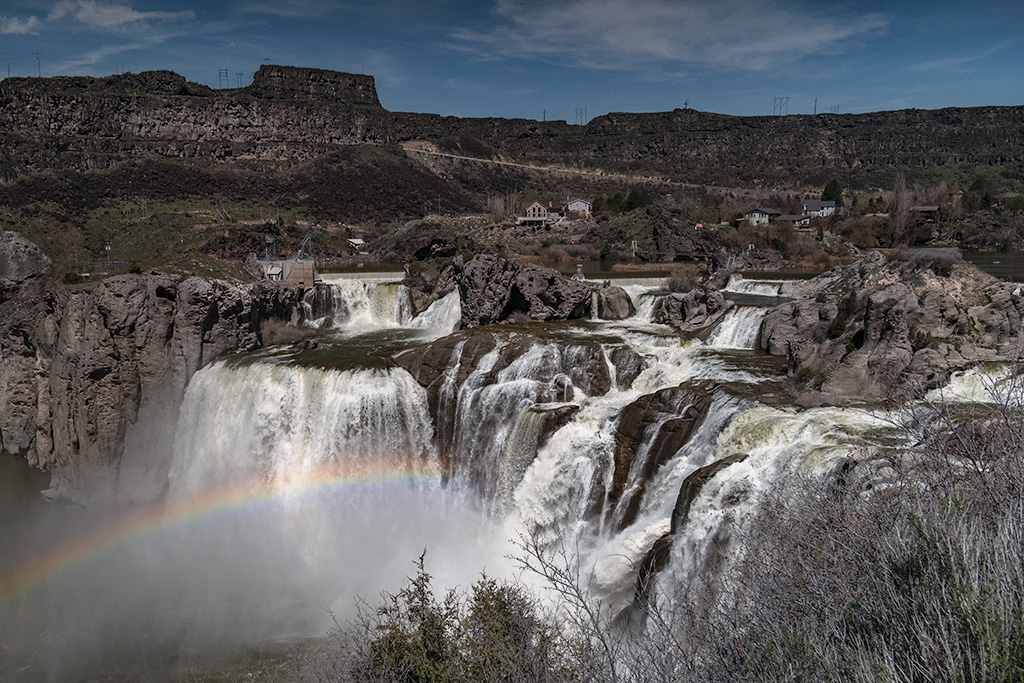
Shoshone Falls is probably the biggest tourist attraction in Twin Falls, and at least in the early spring it does not disappoint. I understand that later in the summer, the entire right-side of the waterfall is dry, and the flowrate of the main plume is reduced quite a bit. I say that Shoshone Falls does not disappoint, but it does have a bit of a “waterpark” feel to it with the three controlled spillways lining the upper-portion of the falls, the houses in the background, and the powerplant (conveniently cropped-out of this photo) at the bottom of the falls.
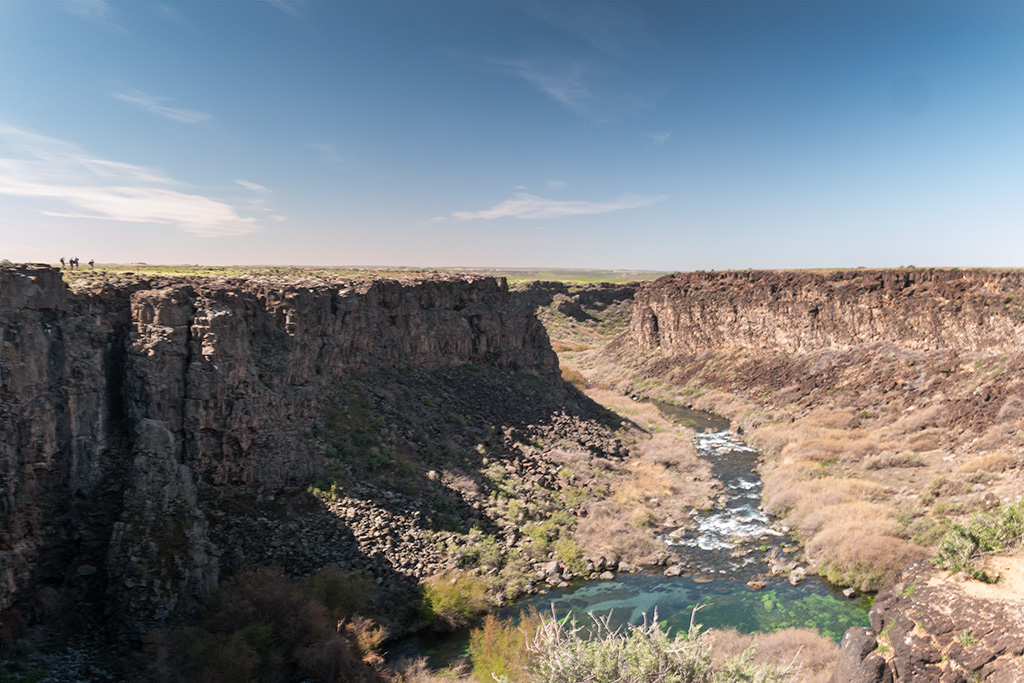
Box Canyon is an interesting geological phenomenon that stretches back from the Snake River, several miles. It was my favorite destination on this trip because it is “au naturel” like Caldron Linn and has so many different and amazing features to explore. The photograph above is taken from the boxed end of the canyon, towards the Snake River. The canyon is completely spring-fed and according to Idaho is the 11th largest spring in the United States (3).
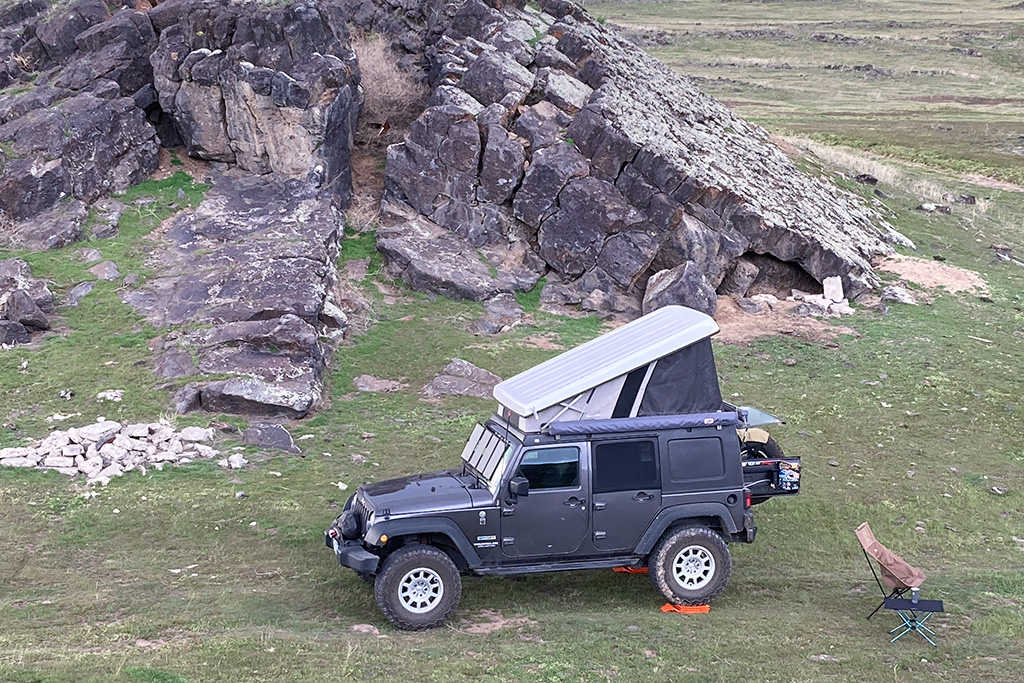
With one more day to go, I bid adieu to Caldron Linn and found a great spot in BLM land, in Snake River Canyons Park, off Golf Course Road / Shoshone Falls Road (I thought it was all Golf Course Road, but Google is showing it turning into Shoshone Falls Road, east of Highway 93). Go past the Rickets RV Camp sign and take any left turn into the BLM land – it goes for miles.
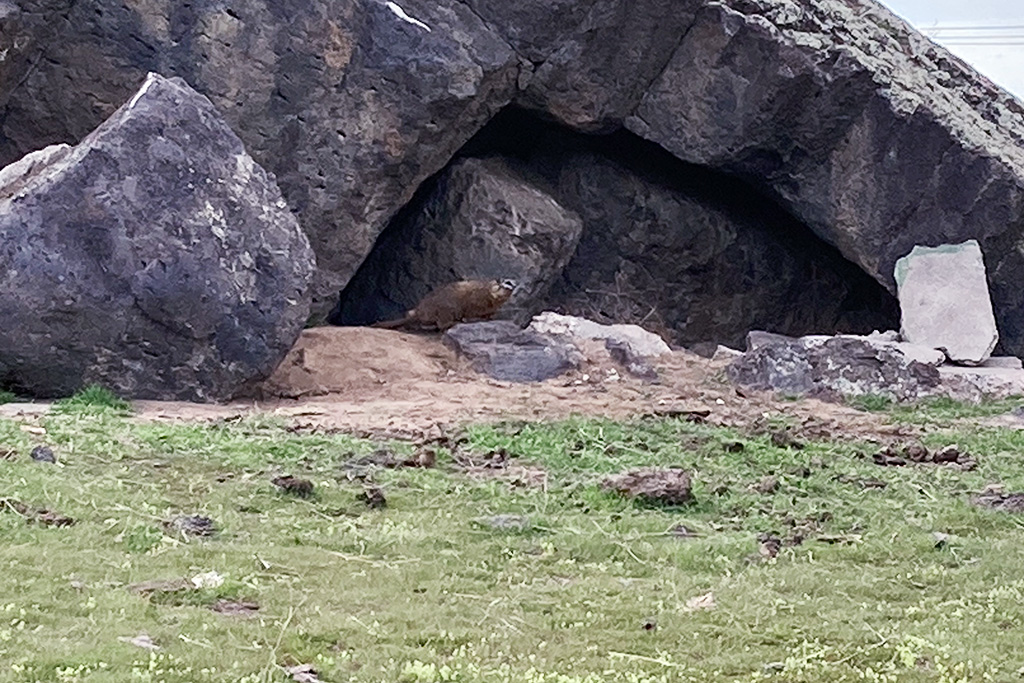
I would be remise if I failed to mention one of the most common sights around the Twin Falls area; the Yellow-bellied Marmot (4). He or she was not thrilled with my presence but did finally venture out onto the “porch” once it determined that I was no threat.
I had a great couple of days in Southern Idaho and am looking forward to coming back when I have more time to explore the area. I certainly want to spend a day or two at Craters of the Moon National Monument, and I would like to see the Hagerman Fossil Beds visitor center (the fossil beds themselves are closed to the public).
